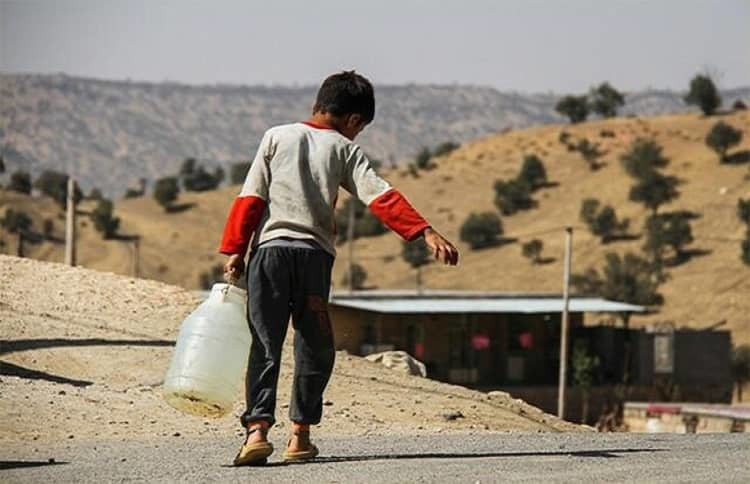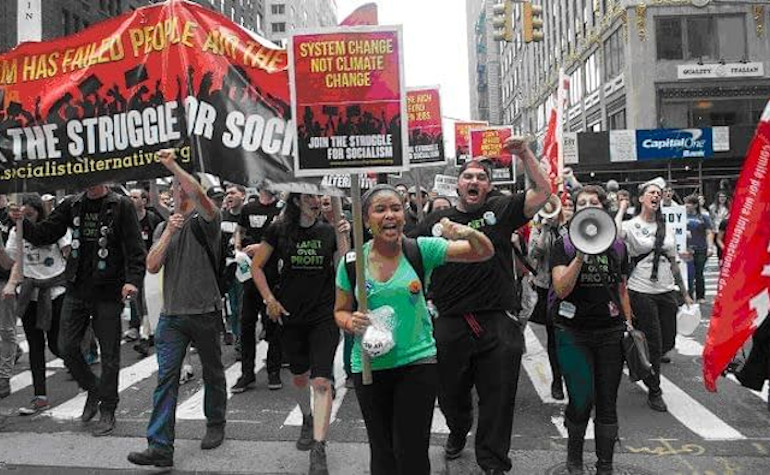Water shortages have led to nearly a week of desperate protests in Iran’s oil-rich Khuzestan province leaving at least ten dead. One thing is clear, the newly elected “death judge” will not have one calm minute.
With a population of 5 million, Khuzestan can be called the “beating heart” of Iran, because it is one of the most important and major centers of oil and gas production, where there have recently been big strikes.
Due to its geographical conditions, there is plenty of water in the region and the lives of the people are dependent on it. Therefore, it is particularly significant for the government. However, due to greed and capital’s drive to make more profit, as well as wrong policies followed by the water industries, Khuzestan is now the victim of these dirty policies and suffers from a deep water shortage.
Karun is one of the largest, and the only navigable river in Iran with its source in the Zagros mountains. The regime has built over twenty dams along its length to transfer water to the eastern semi-desert and desert areas. The most important of these dams are “Karun 1, 2, 3 and 4”. Water abstraction and its transfer from the tributaries of the Dez and Karun rivers extends back for years, when the Koohrang tunnel was built. It transfers 330 million cubic meters of water every year to the East and to the city of Isfahan. In addition, the “Koohrang 2” tunnel project annually takes a further 270 million cubic meters of water, while the Beheshtabad dam and tunnel sends 770 million cubic meters to the cities of Isfahan, Yazd and Kerman. The water continues to flow onto the semi-arid and desert central plateau and is used by high water-consuming industries, such as steel, and unsustainable agriculture. In this way, billions of cubic meters of water are transferred annually from Karun and Karkheh to these areas. This leads to the destruction of the lives of Khuzestan people, who are dependent on the water. It also continues to destroy thousands of plant and animal species.
Under the banner of a “National Plan”, the right of access to water has been taken away from small farmers and nomads. On the other hand, mismanagement has destroyed the ‘Hur al-Azim’ wetland which has an area of 120,000 hectares and is fed by rivers. This has caused the gradual destruction of the region’s ecosystem. Karkheh River is one of the largest and longest rivers in Iran. Unfortunately, large and poorly designed dams have been built on this river in the tropical areas. Due to the critical situation of global warming and increasing climate change, these dams have been practically turned into large evaporating reservoirs, while, on the other hand, the remaining water is transferred to other areas. There is no water left downstream and for the lagoon. The ruling elite has an insatiable appetite for the destruction of nature. Another factor in the destruction of ‘Hur al-Azim’ is the existence of abundant oil facilities in the wetland, which have caused pollution and aquatic mortality.
The destruction of the environment cannot be solved under capitalism. In the case of Khuzestan, the transfer of water and unfair distribution of wealth, with the concentration of wealth in one particular region is doomed to fail. The profits made out of the tunnel projects, the oil and gas industry and steel production go to a small minority of rich mullahs and capitalists. This is at the cost of environmental destruction, as well as low wages for the workers in these industries.
The destruction of ‘Hur al-Azim’ will not only have massive social consequences, but also serious ecological consequences. It will lead to the creation of fine dust, the destruction of carbon storage, and of the region’s ecosystem in general. It will also lead to migration to the metropolitan areas and increase class divisions. The destruction of ‘Hur al-Azim’ is not only deplorable for Khuzestan, but for the whole country.
Masses of people have now taken to the streets and are protesting peacefully. They are asking for water, but the anger is driven by other deep economic and political reasons, by the many different effects of the economic crisis. The regime has been cracking down on protesters with horrific military intervention, securing cities, intimidating and killing civilians, with more than ten dead in the past few days and the arrest and torture of hundreds.
Reactionary and capitalist governments are armed to the teeth. The Iranian regime protects the interests of the profit-oriented industries, which plunder natural resources and exploit the working class to increase their profits. The Iranian regime needs to suppress and assassinate its opponents, seeking to ensure its survival after the recent years and months of ongoing struggle, protests and strikes in different sectors. This repression has now caused people of other areas and cities in recent days to stand up in support of the oppressed people of Khuzestan and against the deplorable situation of the working class and poor in terms of the ecology and livelihoods.
The demands for access to water, to end the destruction of the environment and the plunder of natural resources for profit can only be achieved against the wishes of the regime of the Islamic Republic. Over the years, the regime has created destruction and insecurity not only in Iran, but also as a regional power for the Middle East in general. The working class, poor and youth who are now protesting need to establish a political force capable of building coordinated resistance against the regime and the capitalist system behind it. The strikes in the energy sector need to be connected with these protests, because only if the industry is taken over by the workers themselves can sustainable production be guaranteed.



